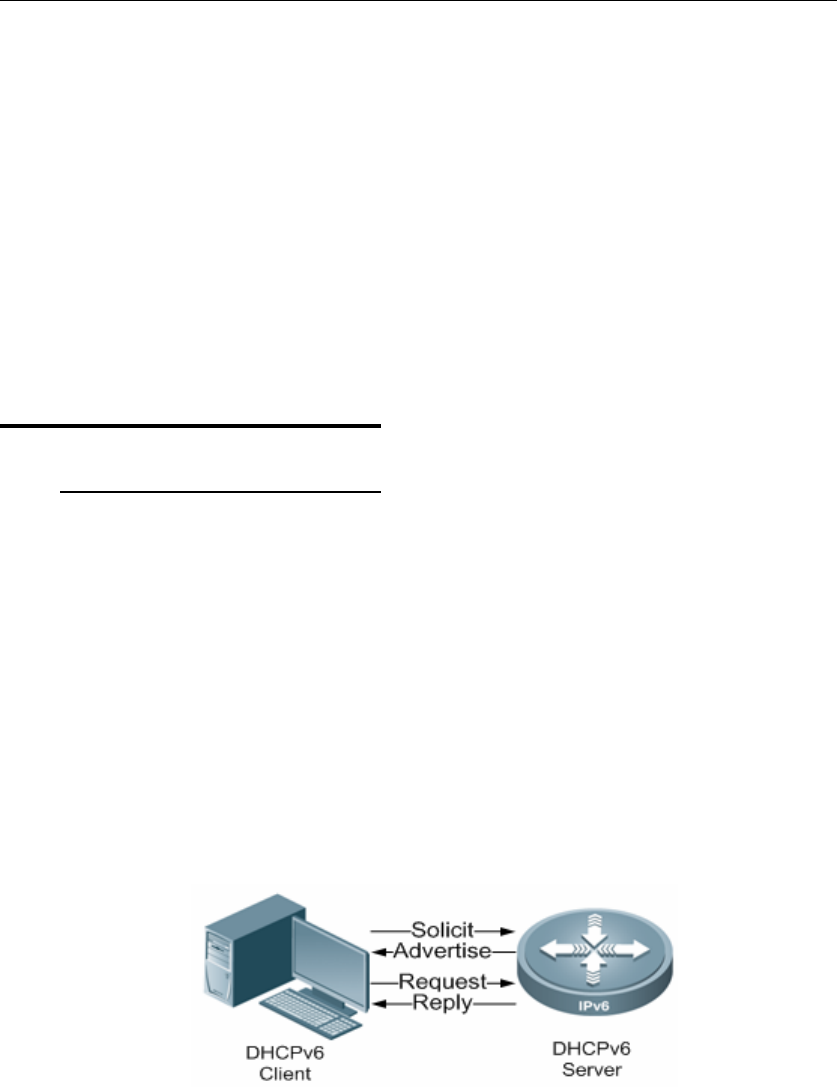
DES-7200 Configuration Guide Chapter 9 DHCPv6 Relay Agent Configuration
9-1
9 DHCPv6 Relay Agent
Configuration
9.1 Understanding DHCPv6
Relay Agent
9.1.1 DHCPv6 Overview
With the IPv6 network development, IPv6 network is widely used gradually. One
primary feature of the IPv6 network at the beginning of the IPv6 design is the
autoconfiguration of the network node. The concepts of stateless
autoconfiguration and stateful autoconfiguration are provided in the new
network frame. For the stateless autoconfiguration, the newly-added network
nodes complete all configurations through the Router Advertisement. While for
the stateful autoconfiguration, the DHCPv6 server assigns the addresses and
provides configuration parameters to the clients. For the detailed description
about the DHCPv6, the only stateful autoconfiguration model at present, refer to
the RFC3315. A typical exchange process between the DHCPv6 server and
client is shown in the Figure-1:
Figure-1 DHCPv6 Server-Client
1. The DHCPv6 Client sends the Solicit packet in the multicast form destined
to the address FF02::1:2 and the UDP port 547 to the DHCPv6 Server and
DHCPv6 Relay in the local link.
2. After the DHCPv6 Server receives the Solicit packet in the multicast form, it
responses the Advertise packet in the unicast form.


















